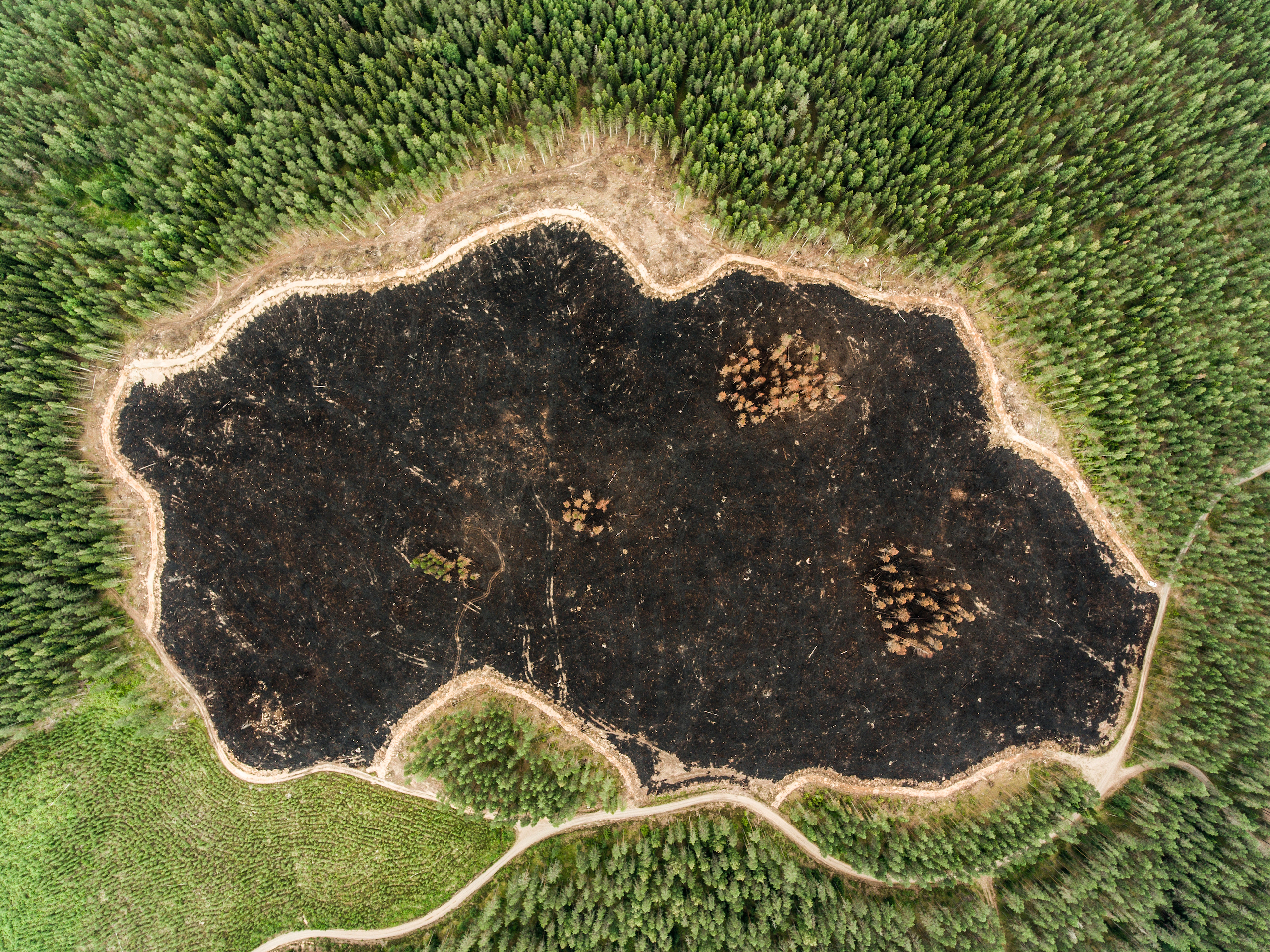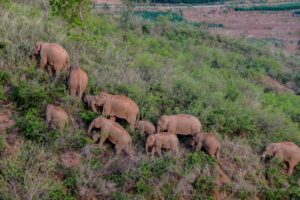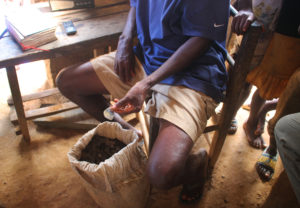Parts of the latest draft of the international deal to reverse the decline of nature have pleased some campaigners, but significant gaps remain.
The new draft of the “Global Biodiversity Framework” was published earlier this month by the UN Convention on Biological Diversity (CBD), following a series of virtual discussions held in May and June.
Overall, the new document is a “pretty significant improvement” on the original “zero draft” published in January 2020, according to Linda Krueger, global biodiversity policy lead at The Nature Conservancy (TNC). She points to a new target for at least 20% of degraded freshwater, marine and terrestrial ecosystems to be under restoration, and well-connected to each other, by 2030. Restoration was mentioned only briefly within another target in the “zero draft”.
The Convention on Biological Diversity – or CBD – is an international agreement that was reached at the United Nations Earth Summit in Brazil in 1992.
It has three objectives: the conservation of biodiversity, the sustainable use of its components and the fair sharing of benefits arising from the use of genetic resources.
A total of 195 countries and the European Union are now party to the agreement. Only the United States and Vatican City have not ratified it.
The framework contains four overarching goals for 2050. These are about improving the integrity of ecosystems; protecting and enhancing nature’s contribution to people; fairly sharing the benefits of genetic resources; and financing and implementing the framework.
There are also milestones against which progress towards each goal will be assessed, and 21 “action targets” that governments need to act on immediately and achieve by 2030.
A key action target – to ensure at least 30% of land and sea areas are protected – has been strengthened to stress that such areas need to be “effectively and equitably managed”, in recognition that many existing protected areas lack good governance.
In addition, there is stronger recognition of the role of local communities and indigenous people in protecting nature, said Krueger. And there is a target for all businesses to report on their dependencies and impacts on biodiversity, and at least halve negative impacts. The Campaign for Nature (CfN) was also pleased with these elements.
However, Krueger believes the framework lacks elements that could make it more transformational. In particular, targets to explicitly tackle the sectors that are driving biodiversity loss through land use change, degradation and habitat loss.
The first 2030 action target states that all land and sea areas should be under spatial planning to address the impacts of land and sea use change. But this needs to spell out the sectors, such as infrastructure and agriculture, answerable to the target, she said.
TNC, CfN and other groups are campaigning for an overall global goal for nature similar to the climate-related goal of net zero emissions. This would involve aiming for zero net loss of nature from 2020, net positive nature by 2030, and full recovery by 2050. The groups want this added to the framework’s overall mission statement, Krueger said.
Other campaigners were far more critical of the draft. Li Shuo, senior global policy advisor on climate, biodiversity and oceans at Greenpeace East Asia, compared the draft to a Paris climate agreement with “only the 1.5C goal and nothing else”.
He attacked in particular the lack of means of implementing the targets. “The whole document is 12 pages, and mostly [consists of] targets covering where we need to be. The ‘how do we get there’ is 1.5 pages. Do we seriously believe we will get there with this?” he said.
The CBD secretariat has said that the implementation components could be included in a decision by parties, rather than within the framework itself. For Li, focussing on targets alone would make good rhetoric but fall short on delivery.
Krueger believed that placing details on implementation separately within a COP decision could work in theory, but without knowing what those would be, the targets were just “words on a paper”.
NGO the Center for Biological Diversity slammed the draft for not aiming for an end to all extinctions. Instead, the document calls for the rate of extinction to be reduced at least tenfold, and the risk of species extinctions across all taxonomic groups halved.
To truly minimise future pandemic risk, we need to rethink commercial use of wildlifeTanya Sanerib, Center for Biological Diversity
Tanya Sanerib, international legal director of the campaign group, also pointed to the lack of emphasis on eliminating unsustainable trade and exploitation of biodiversity. Despite the link between the origins of Covid-19 and the wildlife trade, the draft only asks for such trade to be “safe for human health”, she said. “To truly minimise future pandemic risk, we need to rethink commercial use of wildlife,” she said.
A significant gap is the lack of a monitoring system against which to assess progress towards goals, milestones and targets. Alongside the draft framework, the CBD published a draft of proposed indicators setting out the methodological basis for how targets will be measured. However, full details on how countries will carry out the monitoring, report on it, and how reviews would be carried out are missing.
Deputy executive secretary of the CBD, David Cooper, explained that the indicators would provide a quantitative element to the targets. The majority of those proposed are already in use by countries through other processes, such as the UN system for environmental economic accounting, and UN protocols covering biosafety and genetic resources.
“It will be important also to invest in increasing the capacity of all countries to monitor biodiversity and to report on it, particularly developing countries,” he said.
Francis Ogwal, co-chair of the framework’s working group, pointed out that implementation of the failed Aichi targets was delayed for several years while the indicators were drawn up.
But Krueger said that a much more comprehensive list than that proposed would be needed. “By the time the framework is signed, we really want to know how we’re going to measure all these targets. Without having that finalised it could be very frustrating again, and cause other delays,” she said.
The draft made some headway on the resources needed to protect nature, stating that the finance gap should be progressively closed so that by 2030 at least US$700 billion per year is flowing into implementing the framework. This would be achieved through a reduction in harmful subsidies, and an increase in financial resources from all sources. The figure comes from estimates produced by TNC and US-based think-tank the Paulson Institute.
Krueger welcomed the framework’s recognition of the level of finance needed, but stressed that countries should produce National Biodiversity Finance Plans to ensure implementation.
CfN said that the proposed increase of $10 billion per year of finance from wealthy to developing nations fell far short of what conservationists and economists say is needed. There has been some progress on finance outside the CBD process though. At the G7, Canada announced a doubling of its international climate finance to $5.3 billion over five years, including support for nature and nature-based solutions, and Germany announced an increase from €4 billion to €6 billion by 2025, with focus on nature-based solutions to climate change.
Meanwhile, the final political negotiations on the framework have again been pushed back. They were meant to take place at the 15th Conference of Parties (COP15) in Kunming, China this coming October. But the COP has been delayed until 2022 due to the ongoing pandemic. A high-level meeting of CBD officials agreed to only a partial convening of the COP in October to focus on procedural and administrative issues.
The October meeting needed to provide real impetus, not be just another show of rhetoric that hardly unlocks any contentious issues, Li said. “China needs to understand that much of the responsibilities for the success of COP15 are on its shoulders now. It needs to rise up, otherwise the global nature protection agenda will fail.”









